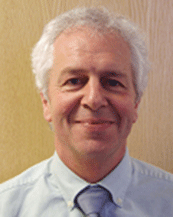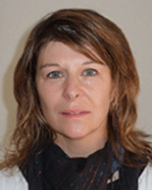Deepwater Exmouth Plateau, North Carnarvon Basin: preliminary investigations into ridge and furrow features*
Kevin Day A , Julie Gale B and John Smallwood CA Gardline Marine Science Pty Geohazards Manager Gardline Marine Sciences Pty Ltd 22 Blackly Row Cockburn Central Perth WA 6164. Email: kevin.day@gardline.com
B Gardline Marine Science Pty Geohazards Consultant Gardline Marine Sciences Pty Ltd 22 Blackly Row Cockburn Central Perth WA 6164. Email: julie.gale@gardline.com
C Hess Exploration Australia Pty Ltd, Level 18, Allendate Square, 77 St Georges Terrace, Perth WA 6000. Email: john.smallwood@hess.com
The APPEA Journal 50(2) 731-731 https://doi.org/10.1071/AJ09095
Published: 2010
Abstract
Numerous fields of long, shallow subsurface linear ridge and furrow features were mapped during the interpretation of a 3D seismic dataset covering Hess Exploration Australia Pty Ltd’s WA-390-P deepwater Exmouth Plateau permit. These kilometre scale features are often slope parallel and have separations of between 100 and 400 m between ridge crests. Heights range from the limit of seismic resolution up to approximately 9 m. Similar linear shallow subsurface features have been interpreted in the North Falkland Basin in Desire Petroleum’s Tranches C and D permits. Initial investigations suggest that these features appear similar to the Holocene and older mega furrows/palaeo-mega furrows identified along the lower slope/rise in the Gulf of Mexico, most notably along the base of the Sigsbee Escarpment, and along other continental slope/rise settings.
Evidence of seabed and shallow sub-seabed sediment instability in the form of slumps and slides together with the effects of shallow sediment deformation and dewatering are also visible across the WA-390-P area. Ridge and furrow features from the deepwater Exmouth Plateau area are described in detail alongside examples from the North Falkland Basin. It is suggested that interaction between gravity-driven downslope processes, sediment dewatering and along slope sedimentary processes could be a possible mechanism of formation for these features. Horizontal and vertical delineation of these features can contribute towards regional understanding of subsurface sediment instability.
Keywords: North Carnarvon Basin, Exmouth Plateau, North Falkland Basin, 3D seismic furrows, ridges, slumps, deepwater, bottom currents

Kevin Day is a specialist geohazards consultant with 29 years’ experience in marine geophysical surveys and geohazard assessments, working with Gardline Marine Sciences and RPS. Kevin has been with Gardline for a total of 25 years and has a background in geology and oceanography. He has had a variety of roles, including worldwide offshore work as a field geophysicist and managing the geophysics department in the UK. Now based in Perth, Kevin continues to work on geohazard interpretation and is occasionally known to rue the demise of the paper section, keeping his ten points to hand. |

Julie Gale is a specialist geohazards consultant with Gardline Marine Sciences and has been in this role for two years. With a background in geological sciences and geophysics, she has over 14 years’ experience and has worked on geohazard assessment projects across the globe. Julie is based in Perth, Western Australia and has been working on projects in the Australasian region for over five years. Julie has an MSc in geology from Royal Holloway College, University of London. |

John Smallwood has worked at Hess for 13 years, of which the last 3 have been as the Australia Exploration Manager. His previous experience includes exploration, appraisal and development in: the West of Shetlands and North Sea, UK; Gabon; Algeria; Libya; Egypt; Thailand; Malaysia; and, Indonesia. He has a BA in geological sciences, a PhD in marine geophysics from Cambridge University and is a chartered geologist. He has published 32 research papers on subjects including: volcanic continental margins; seismic attributes; sediment budgets; depth conversion; potential fields; and, historical geophysics. |
References
Bryant, W., Bean, D., Dellapenna, T., and Dunlap, W., 2000—Massive Bed-forms, Mega-furrows, on the Continental Rise at the base of the Sigsbee Escarpment, Northwest Gulf of Mexico. American Association of Petroleum Geologists Annual Meeting, New Orleans, April 16–19.Lastras, G., Canais, M., Urgeles, R., Ambias, D., Ivanov, M., Droz, L., Dennielou, B., Fabres, J., Schoolmeester, T., Akhmetzhanov, A., Orange, D., and Garcia-Garcia, A. (2007). A walk down the Cap de Creus canyon, Northwestern Mediterranean Sea: Recent processes inferred from morphology and sediment bedforms. Marine Geology 246, 176–92.
Scott, E., Peel, F., Taylor, C., Bryant, W., and Bean, D., 2001—Deep Water Gulf of Mexico Sea Floor Features Revealed Through 3D Seismic. Offshore Technology Conference, Houston, 30 April–3 May, 12961-MS.


